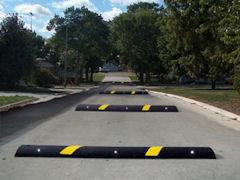 Foes of the Charlottesville Bypass have won an important ally. In an advisory opinion, the Environmental Protection Agency has recommended that the Virginia Department of Transportation (VDOT) consider alternatives to the 6.5-mile bypass of U.S. 29 north of Charlottesville.
Foes of the Charlottesville Bypass have won an important ally. In an advisory opinion, the Environmental Protection Agency has recommended that the Virginia Department of Transportation (VDOT) consider alternatives to the 6.5-mile bypass of U.S. 29 north of Charlottesville.
Sean Tubbs fleshes out the details in Charlottesville Tomorrow:
“Alternatives analysis is the heart of [the National Environmental Policy Act],” reads an addendum to a letter sent by EPA officials to VDOT in October in response to a draft version of the environmental assessment. “Given the time that has passed since the original study, an alternative that is sensitive to the environmental and social concerns [should] be considered in addition to the preferred bypass.”
VDOT officials are currently revising a 62-page environmental assessment released in late August to consider comments from the public, nonprofit organizations and government agencies. VDOT is expected to send the final environmental assessment to the [Federal Highway Administration] in December.
In their letter, EPA officials argue that many conditions have changed since the last comprehensive Environmental Impact Statement was made in 2003.
“It might be appropriate for the lead agencies to provide an updated or new [supplemental environmental impact statement] to reflect the environmental conditions since the last NEPA document [and] provide an up-to-date alternatives analysis reflecting current status of roadways and land use in the area,” reads an Oct. 9 letter signed by Jeffrey D. Lapp, associate director of EPA’s office of environmental programs.
As part of the environmental assessment, VDOT opted not to conduct an analysis of alternatives that serve the same purpose as the bypass. The EPA said the department should reconsider.
The EPA letter is purely advisory. The decision of whether to accept the Environmental Assessment submitted by VDOT rests with the Federal Highway Administration. But the EPA letter supports the argument offered by local bypass foes.
Bypass supporters dismissed the significance of the EPA letter. “The EPA letter is as surprising as a zebra with stripes [because] the organization has not endorsed any bypass in 20 years,” Neil Williamson with the Free Enterprise Forum told Charlottesville Tomorrow.
Speaking of considering alternatives, Albemarle County supervisors are exploring the alternative of using an integrated traffic signal network to reduce congestion in the U.S. 29 corridor. The installation of such a system on U.S. 29 would require between 23 and 25 signals, according to VDOT. Supervisor Dennis Rooker says that, based on his conversations with Rhythm Engineering, the equipment would cost about $33,000 per intersection. That implies a project cost of roughly $1 million — compared to the $244 million cost of building the bypass. However, VDOT officials warned that the benefits could be limited if the capacity of the U.S. 29 corridor is maxed out. Tubbs has that story here.
Bacon’s bottom line: VDOT never gave serious analysis to the detailed Places 29 plan devised by Charlottesville-area officials as an alternative to the Bypass. That plan proposed separated-grade intersections at Hydraulic and Rio roads, the extension of two parallel roads to divert local traffic, and spot improvements along U.S. 29. That plan itself could be updated and improved by adding an integrated traffic signal network.
For roughly the same cost as the Bypass, it could be argued, Places 29 could provide comparable improvement in travel times — not just for travelers passing through the Charlottesville area but for Charlottesville and Albemarle residents themselves.
— JAB


